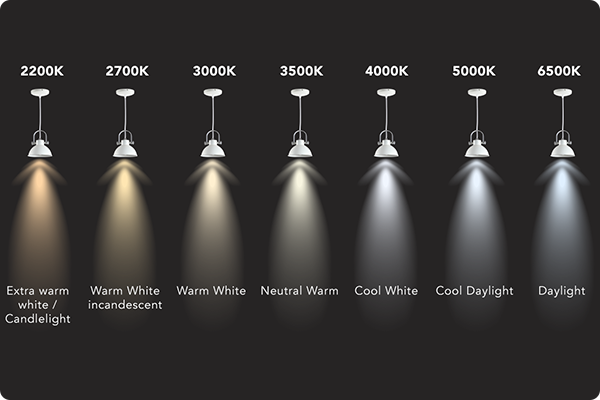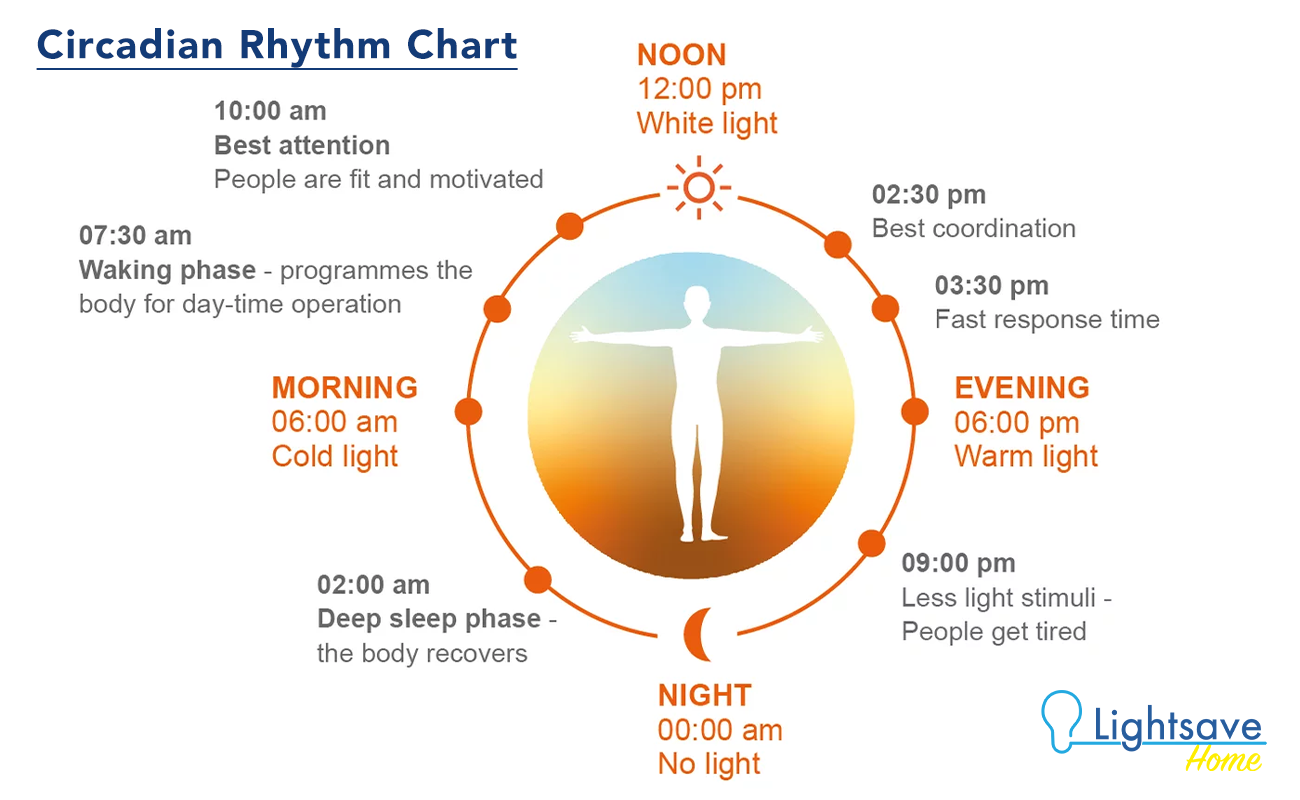Colour Temperature & CRI: A Home Lighting Guide

How Colour Temperature and CRI Shape Your Home Environment
When choosing lighting for your home, brightness isn’t the only factor that matters. The colour temperature and CRI (Colour Rendering Index) of your bulbs can significantly impact the ambience of your home and the appearance of your spaces.
In this guide, we’ll explain what colour temperature and CRI mean, how they impact your home, and how to choose the right lighting for each room—whether you're redecorating a bedroom, updating a kitchen, or simply replacing old bulbs.
What is Colour Temperature?
Colour temperature refers to how ‘warm’ or ‘cool’ the light from a bulb appears. It’s measured in Kelvins (K):
- Very Warm White (2000K–2700K): Soft, amber light that mimics candlelight or a traditional incandescent bulb
- Warm White (2700K–3000K): Cosy and inviting; ideal for bedrooms and living rooms
- Cool White (4000K): Crisp and clean; great for kitchens, bathrooms and utility spaces
- Daylight (5000K–6500K): Bright, bluish light similar to natural daylight; often used in garages, lofts or for task lighting

How Colour Temperature Affects Mood and Wellbeing
Lighting doesn’t just illuminate your space—it influences how you feel, think, and sleep.
This is where human-centric lighting (also known as circadian lighting) comes in. It’s based on the idea that indoor lighting should mimic the natural rhythm of daylight, supporting your body’s internal clock, also known as the circadian rhythm.
During the day, natural light shifts in colour temperature:
- Morning and evening light is warmer and more amber-toned (around 2700K–3000K)
- Midday sunlight is cooler and bluer in tone (around 5000K–6500K)
By adjusting your home lighting to reflect these natural shifts, you can support your body’s natural sleep-wake cycle—boosting energy levels during the day and promoting restful sleep at night.
Practical Examples:
- In the morning or afternoon, cool white lighting (4000K–5000K) in kitchens or home offices can help increase alertness and concentration—great for remote work or study.
- In the evening, switching to warmer light (2200K–2700K) in living areas and bedrooms signals to your body that it’s time to relax. This encourages the production of melatonin, the hormone responsible for helping you fall asleep.
Why It Matters:
- Better sleep = stronger immune function, improved mood, and sharper focus
- Balanced lighting can reduce eye strain, especially in rooms where you read, cook or use screens
- Mimicking daylight indoors is especially important during the darker winter months when natural sunlight is limited
Modern LED technology makes this easier than ever. Some LED bulbs even offer tunable white or dim-to-warm settings (Philips DimTone), allowing you to change the colour temperature to match the time of day or activity.

Recommended Colour Temperature by Room
| Room | Recommended Colour Temperature | Why It Works |
| Living Room | 2700K–3000K | Creates a relaxing, homely vibe for evenings |
| Bedroom | 2200K–2700K | Encourages rest and helps wind down before sleep |
| Bathroom | 3000K–4000K | Crisp lighting for grooming without harshness |
| Kitchen | 3000K–4000K | Bright enough for cooking while still comfortable |
| Hallways & Stairs | 2700K–3000K | Warm light for a welcoming first impression |
| Home Office | 4000K–5000K | Supports focus and alertness during the day |
| Garage / Loft | 5000K–6500K | Daylight-style lighting for visibility and safety |
What is CRI (Colour Rendering Index)?
CRI measures how accurately a light source reveals the true colours of objects compared to natural light. CRI is measured on a scale from 0 to 100, where higher values indicate more accurate colour rendering. A light source with a CRI of 100 reproduces colours exactly as they would appear under natural daylight—meaning objects look vivid, true-to-life, and undistorted. Lower CRI values can cause colours to appear dull, washed out, or slightly off, especially in reds, skin tones, and natural materials.
- CRI 80+: Suitable for most home use
- CRI 90+: Ideal for areas where colour accuracy matters (e.g., dressing rooms, bathrooms, home studios)
Lighting with a high CRI:
- Makes food look more appetising
- Helps clothes and makeup appear more natural
- Reduces the flat, dull effect some bulbs can create
Most quality LED bulbs now offer a CRI of 80 or above—but it’s worth checking before you buy, especially for feature lighting or detail-focused spaces.

Tips for Choosing the Right Bulb
- Match the light to the room’s purpose. Use warm lighting in spaces where you relax, and cooler tones where you need clarity or concentration.
- Watch out for colour temperature and CRI on product listings. At Lightsave Home, we list both so you can choose with confidence. Use the filters in the product categories to find the colour you need quickly.
- Mix and match thoughtfully. If you're combining pendants, spots and task lighting in a kitchen or living space, keep colour temperatures consistent for a harmonious feel.
Whether you’re after the soft glow of a filament-style bulb or a bright white spotlight for food prep, LED gives you flexibility without compromise.
Not sure which colour temperature or CRI is right for your home?
Get in touch with our expert team for friendly advice and recommendations tailored to your space
Colour Temperature and CRI Frequently Asked Questions
Q1: What is the best colour temperature for a bedroom?
A: For bedrooms, a warm white light between 2200K and 2700K is ideal. It creates a cosy, relaxing environment that supports better sleep and wind-down routines.
Q2: What does CRI mean in home lighting?
A: CRI stands for Colour Rendering Index. It measures how accurately a light shows the true colours of objects compared to natural light. Higher CRI means more natural-looking results—great for bathrooms, dressing areas and kitchens.
Q3: Is warm or cool light better for kitchens?
A: A neutral to cool white (3000K–4000K) is best for kitchens. It offers clarity and brightness for cooking while still maintaining a welcoming feel, especially in open-plan spaces.
Q4: What is the difference between 2700K and 4000K light?
A: 2700K emits a warm, yellowish light suitable for living rooms and bedrooms. 4000K is a cooler white light that works well in kitchens, bathrooms, and workspaces where visibility is key.
Q5: Are high CRI LED bulbs better for homes?
A: Yes, especially in spaces where colour matters—like bathrooms, wardrobes or kitchens. High CRI (90+) bulbs make skin tones, clothing, and food look more natural and vibrant.
Q6: Can I mix colour temperatures in the same room?
A: It’s possible but not usually recommended. Mixing warm and cool lights can create visual imbalance. For a cohesive look, use the same colour temperature throughout a space.